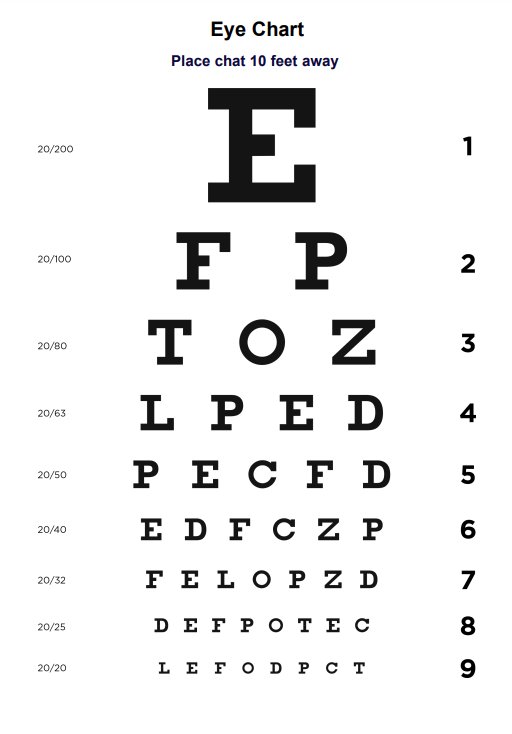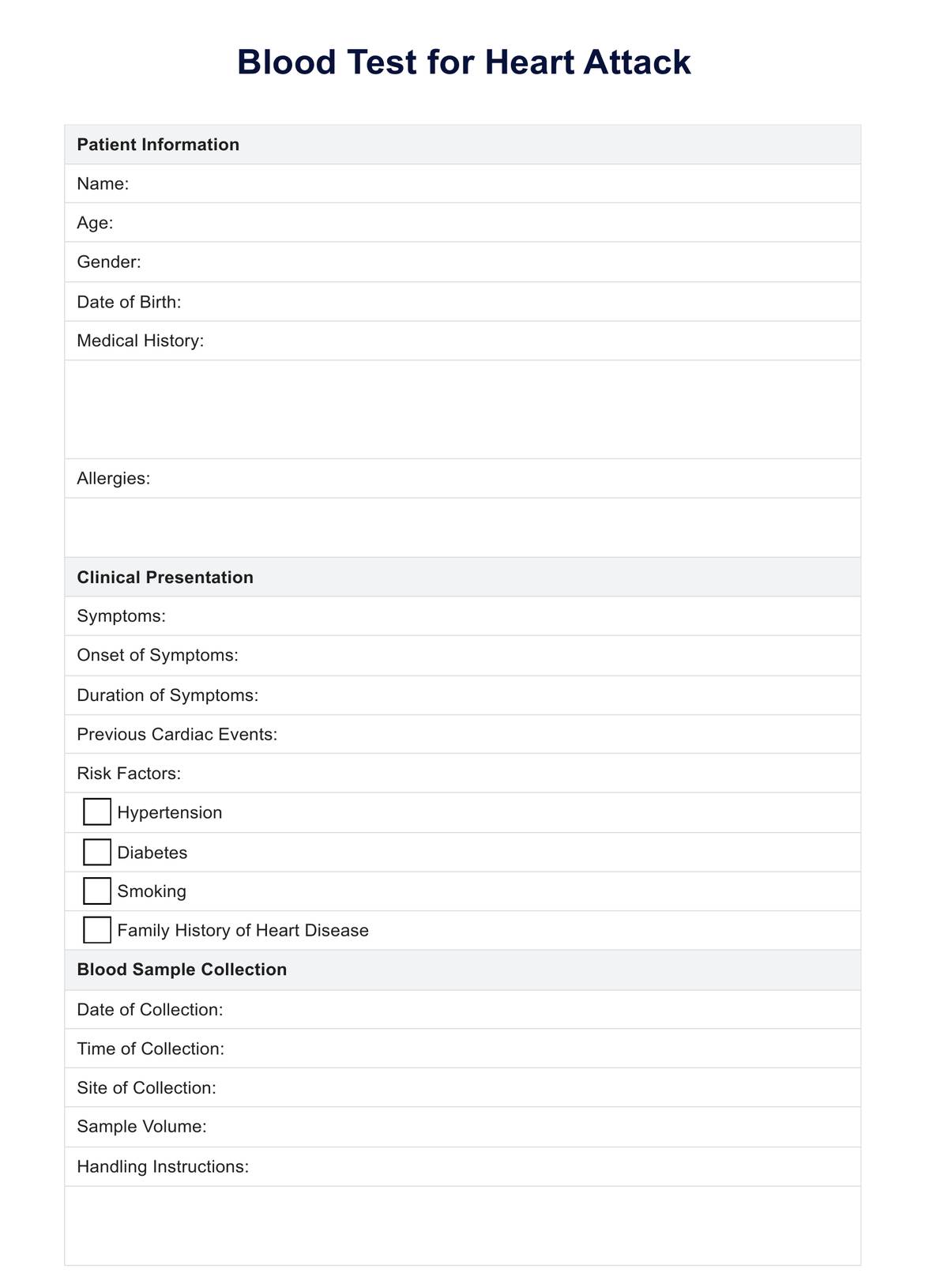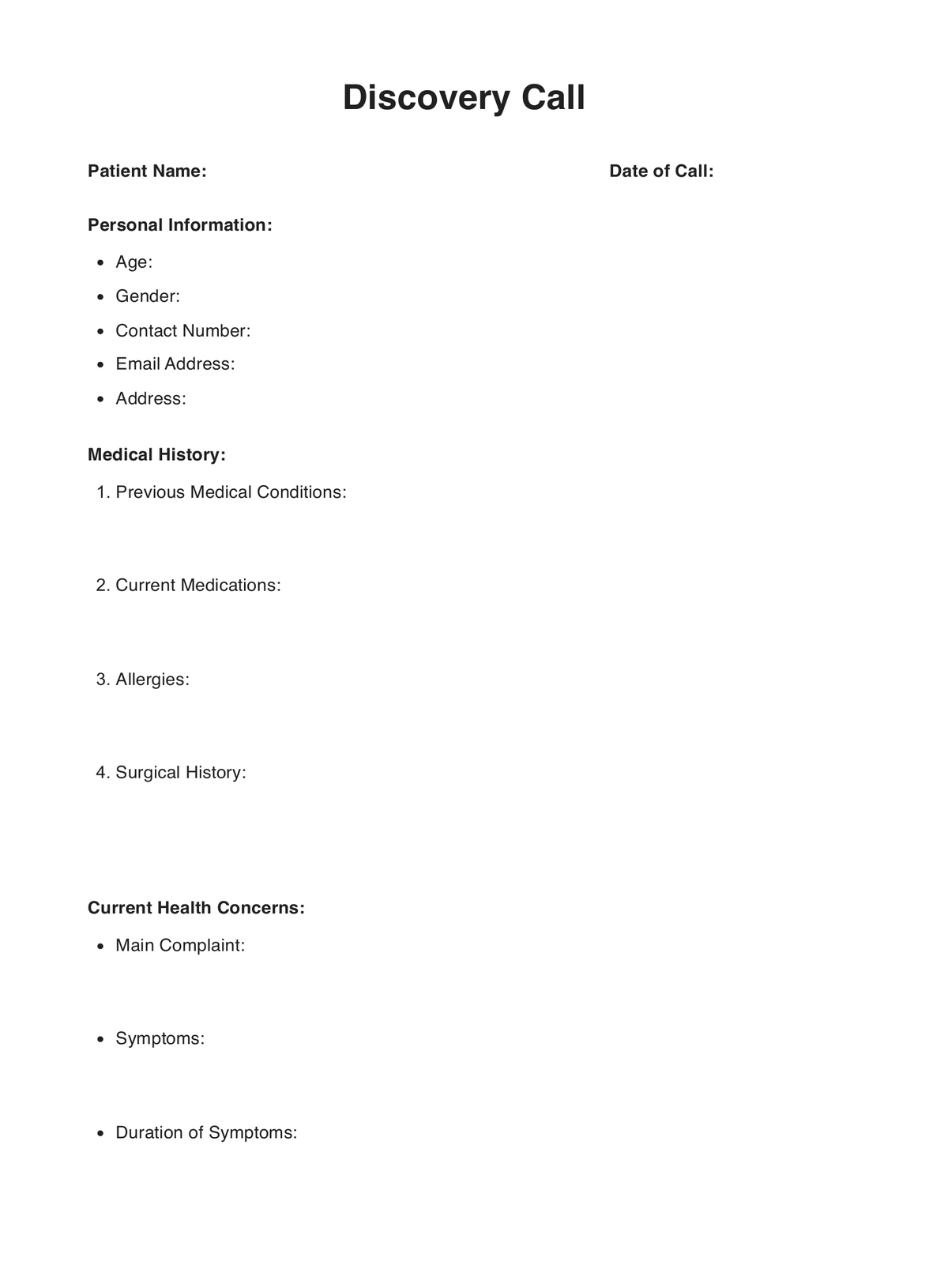Free Light Chains
Get precise results with the Free Light Chains Test. It is essential for diagnosing multiple myeloma and other disorders. Learn more.


What is a Free Light Chains Test?
A Free Light Chains Test, also known as a Free Light Chain Assay or Free Kappa/Lambda Ratio, is a medical diagnostic blood test that measures the levels of free light chains (FLCs) in the bloodstream. Free light chains are proteins produced by plasma cells, a type of white blood cell, and are an essential component of antibodies (immunoglobulins) in the immune system. There are two types of light chains: kappa and lambda. In a healthy individual, these light chains are present in the blood in a specific ratio.
This test is primarily used to diagnose and monitor various hematological and immunological disorders, most notably multiple myeloma and other plasma cell disorders. An overproduction of abnormal plasma cells in diseases like multiple myeloma can lead to an abnormal increase in free light chains. Therefore, measuring the levels of free light chains and the kappa/lambda ratio can help in the early detection and management of these conditions.
The test involves drawing a blood sample from the patient, which is then sent to a laboratory for analysis. Results are typically reported as the kappa to lambda light chains ratio, and any significant deviation from the normal range can indicate a potential problem.
The test can also help assess disease progression and monitor the effectiveness of treatment in patients with known plasma cell disorders. If the Free Light Chains Test results are abnormal, further tests, such as bone marrow biopsies or imaging studies, may be conducted to confirm a diagnosis and determine the best course of action.
Free Light Chains Template
Free Light Chains Example
How Does it Work?
Sample Collection
- A healthcare provider or phlebotomist collects a blood sample from the patient, typically from a vein in the arm.
- This sample is drawn into a vacuum-sealed tube or vial for blood collection.
Transportation and Preservation
The blood sample is carefully stored and transported to a clinical laboratory, ensuring it remains at the appropriate temperature to prevent degradation of the components.
Centrifugation
The blood sample is centrifuged at the lab, separating it into its different components �?? red blood cells, white blood cells, and plasma.
Serum Separation
The plasma, which contains the free light chains, is separated from the rest of the blood components.
Assay Procedure
- The laboratory technicians perform the Free Light Chains Test using specific reagents and equipment.
- Depending on the target, they use specialized antibodies that bind to either kappa or lambda light chains.
- This binding generates a detectable signal, such as fluorescence or color change, that can be quantified.
Measurement of Light Chains
The free kappa and lambda light chains are measured independently in the patient's blood sample.
Calculating the Kappa/Lambda Ratio
The laboratory calculates the kappa to lambda light chains ratio, which is an important diagnostic parameter.
Interpretation
- The results are interpreted by comparing the calculated ratio to established reference ranges.
- An abnormal ratio may indicate the presence of a plasma cell disorder, such as multiple myeloma.
Reporting
- The laboratory reports to the healthcare provider, who then discusses the results with the patient.
- The report includes the measured levels of free light chains and the kappa/lambda ratio.
When Would you use this Test?
The Free Light Chains Test is a valuable diagnostic tool primarily employed by hematologists, oncologists, and immunologists to assess and monitor various medical conditions related to abnormal plasma cell growth and immune system disorders. Here are the key scenarios and medical contexts where this test is frequently used:
- Multiple Myeloma Diagnosis and Monitoring: Multiple myeloma is a cancer of plasma cells in the bone marrow. The Free Light Chains Test is a crucial component in diagnosing and monitoring multiple myeloma patients. Elevated levels of free light chains and an abnormal kappa/lambda ratio may suggest the presence and progression of the disease.
- Monoclonal Gammopathies: This test aids in identifying conditions such as monoclonal gammopathy of undetermined significance (MGUS) or smoldering myeloma, which are precursor conditions to multiple myeloma.
- Immunoglobulin Disorders: Disorders that affect immunoglobulins (antibodies), including primary amyloidosis, primary immunodeficiency diseases, and primary systemic light chain (AL) amyloidosis, may involve abnormal free light chain levels and warrant this test.
- Response to Treatment: Oncologists use this test to assess the effectiveness of chemotherapy and stem cell transplantation treatments in patients with multiple myeloma or related conditions. A reduction in free light chains may indicate a positive response.
- Prognostic Assessment: In patients with known plasma cell disorders, the Free Light Chains Test helps predict disease progression and assess the risk of complications.
- Renal Disorders: Kidney specialists (nephrologists) may use this test to evaluate kidney damage caused by excessive free light chains, a condition known as light chain cast nephropathy.
- Autoimmune Diseases: In some autoimmune disorders like systemic lupus erythematosus (SLE) and rheumatoid arthritis, abnormal free light chain levels can be observed, potentially aiding in diagnosis and management.
- Follow-Up for Organ Transplants: Transplant specialists may use this test to monitor immune system function in organ transplant recipients and assess the risk of rejection.
What do the Results Mean?
The Free Light Chains Test measures the levels of free kappa and lambda light chains in the blood and calculates the kappa/lambda ratio. Abnormal results can indicate underlying medical conditions, particularly related to plasma cell disorders and immunological issues. Here's a breakdown of common results and their implications:
Normal Results
In a healthy individual, the kappa to lambda light chains ratio is generally balanced, and the absolute levels of free light chains are within a specified reference range. This indicates a well-functioning immune system.
Abnormal Kappa/Lambda Ratio
- An abnormal ratio may suggest an underlying problem. An increased kappa/lambda ratio might indicate overproduction of kappa light chains, potentially linked to conditions like multiple myeloma.
- Conversely, a decreased kappa/lambda ratio may imply overproduction of lambda light chains, which can also be seen in certain diseases.
Elevated Free Light Chains
Elevated levels of either kappa or lambda light chains can be a sign of various disorders, such as:
- Multiple Myeloma: This cancer often shows Significant increases in free light chains and the ratio.
- Monoclonal Gammopathy: Elevated light chains can suggest conditions like MGUS or smoldering myeloma, which may require further evaluation.
- Primary Amyloidosis: This rare disease can lead to increased levels of lambda light chains.
- Systemic Lupus Erythematosus (SLE): Elevated light chains may be observed in some autoimmune diseases.
Decreased Free Light Chains
Decreased kappa and lambda light chain levels may occur in rare cases of immunodeficiency disorders.
While the test can suggest diagnoses, healthcare professionals use it alongside other assessments. Abnormal results often trigger additional tests like bone marrow biopsies and imaging for confirmation. Expert hematologists and immunologists evaluate these results, ensuring accurate diagnosis and tailored treatment based on the patient's medical history and data.
Research & Evidence
The Free Light Chains Test has its roots in the study of immunology and hematological disorders. It was developed as a diagnostic tool to address the need for more precise and sensitive methods of detecting and monitoring conditions related to abnormal plasma cell growth, notably multiple myeloma.
The development of immunology as a scientific discipline in the late 19th and early 20th centuries laid the foundation for understanding the immune system and antibodies.
Multiple myeloma was first described in the mid-19th century, but in the mid-20th century, researchers began to unravel its complex nature and association with monoclonal gammopathies.
In the latter half of the 20th century, technological advancements in biochemistry and immunology allowed for the isolation and characterization of specific immunoglobulin components, including free light chains.
The Free Light Chains Test was developed as a result of these advancements. It offered a more precise way to measure free light chains in the bloodstream.
Over the years, extensive clinical studies and trials were conducted to validate the test's utility in diagnosing and monitoring various plasma cell disorders, immunodeficiency diseases, and autoimmune conditions.
As a result of robust research and evidence, the test became an integral part of the standard of care for assessing plasma cell disorders. It has been included in guidelines and recommendations by professional medical organizations.
The ongoing research and use of the test have contributed to advancements in the monitoring and treating conditions like multiple myeloma, allowing for more timely interventions and improved patient outcomes.
Today, the Free Light Chains Test is firmly established as a valuable diagnostic resource, and a substantial body of scientific evidence and clinical experience supports its continued use. Researchers and healthcare professionals continue to explore its applications and refine its utility in diagnosing and managing various hematological and immunological disorders.
References
- Bochtler, T., Hegenbart, U., Hei?, C., Benner, A., Cremer, F. W., Volkmann, M., Ludwig, J., Perz, J. B., Ho, A. D., Goldschmidt, H., & Schnland, S. (2008). Evaluation of the serum-free light chain test in untreated patients with AL amyloidosis. Haematologica, 93(3), 459??462. https://doi.org/10.3324/haematol.11687
- Canterbury Health Laboratories. (2023, July 6). Free Light chains, serum - Canterbury Health Laboratories. https://www.chl.co.nz/test/free-light-chains-serum-2/
- Hungria, V., Allen, S., Kampanis, P., & Soares, E. M. (2016). Serum free light chain assays not total light chain assays are the standard of care to assess Monoclonal Gammopathies. Revista Brasileira De Hematologia E Hemoterapia, 38(1), 37??43. https://doi.org/10.1016/j.bjhh.2015.11.003
- Siegel, D. S., Bilotti, E., & Van Hoeven, K. H. (2009). Serum free light chain analysis for diagnosis, monitoring, and prognosis of monoclonal gammopathies. Labmedicine, 40(6), 363??366. https://doi.org/10.1309/lmphodc7r1l0meww
- Tate, J. R., Graziani, M. S., Mollee, P., & Merlini, G. (2016). Protein electrophoresis and serum free light chains in diagnosing and monitoring plasma cell disorders: laboratory testing and current controversies. Clinical Chemistry and Laboratory Medicine, 54(6). https://doi.org/10.1515/cclm-2016-0268
- Testing.com. (2021, November 9). Serum free light chains - Testing.com. https://www.testing.com/tests/serum-free-light-chains/
- Tosi, P., Tomassetti, S., Merli, A., & Polli, V. (2012). Serum free light-chain assay for the detection and monitoring of multiple myeloma and related conditions. Therapeutic Advances in Hematology, 4(1), 37??41. https://doi.org/10.1177/2040620712466863
Commonly asked questions
Hematologists, oncologists, and immunologists usually request a Free Light Chains Test.
They are used to diagnose and monitor plasma cell disorders like multiple myeloma, assess treatment response, and investigate immunological conditions.
A blood sample is collected and analyzed in a clinical laboratory to measure free kappa and lambda light chains.
The test is relatively quick, taking minutes to process in the laboratory. However, results may take a few days to become available to the healthcare provider and patient.


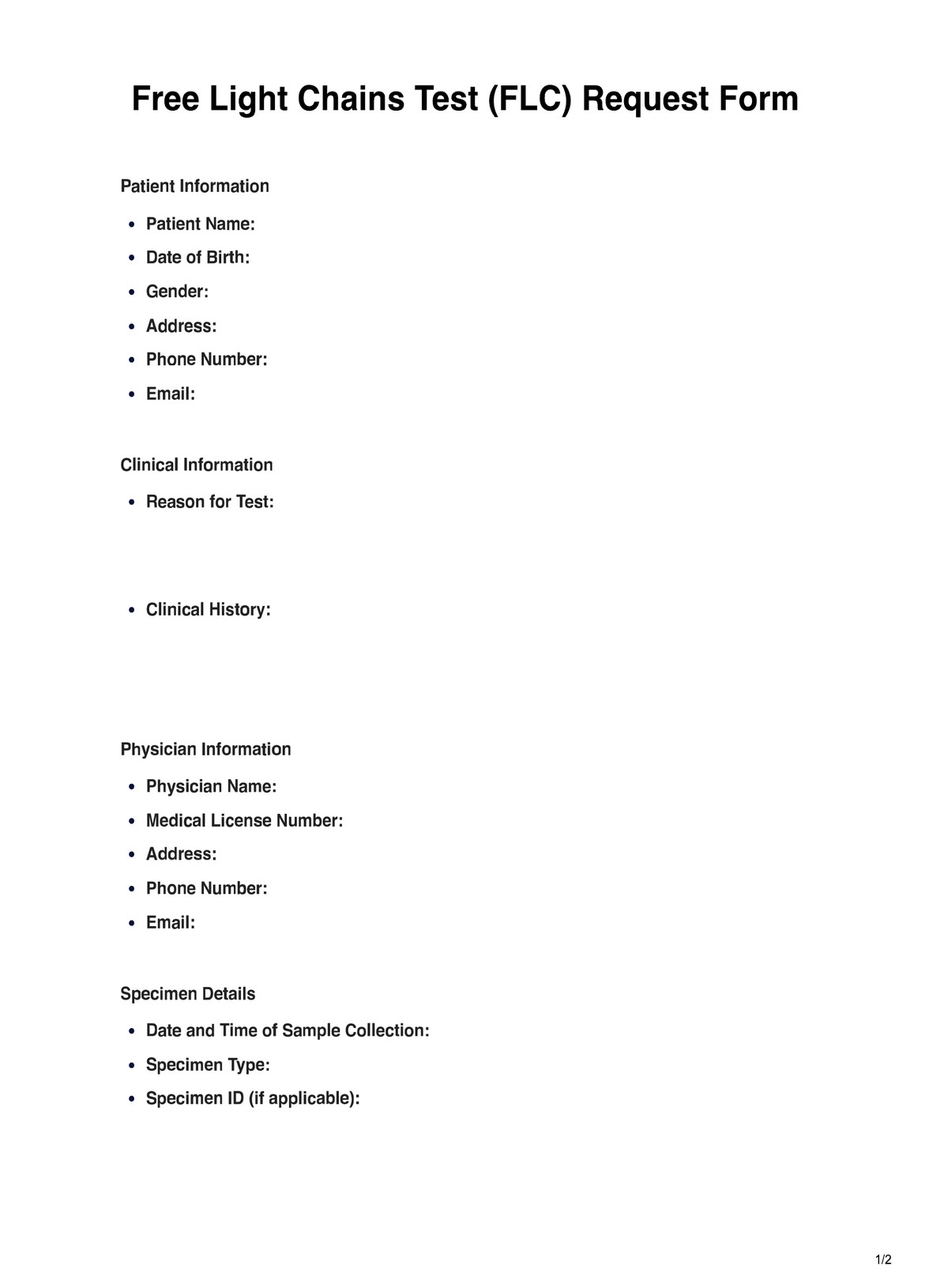
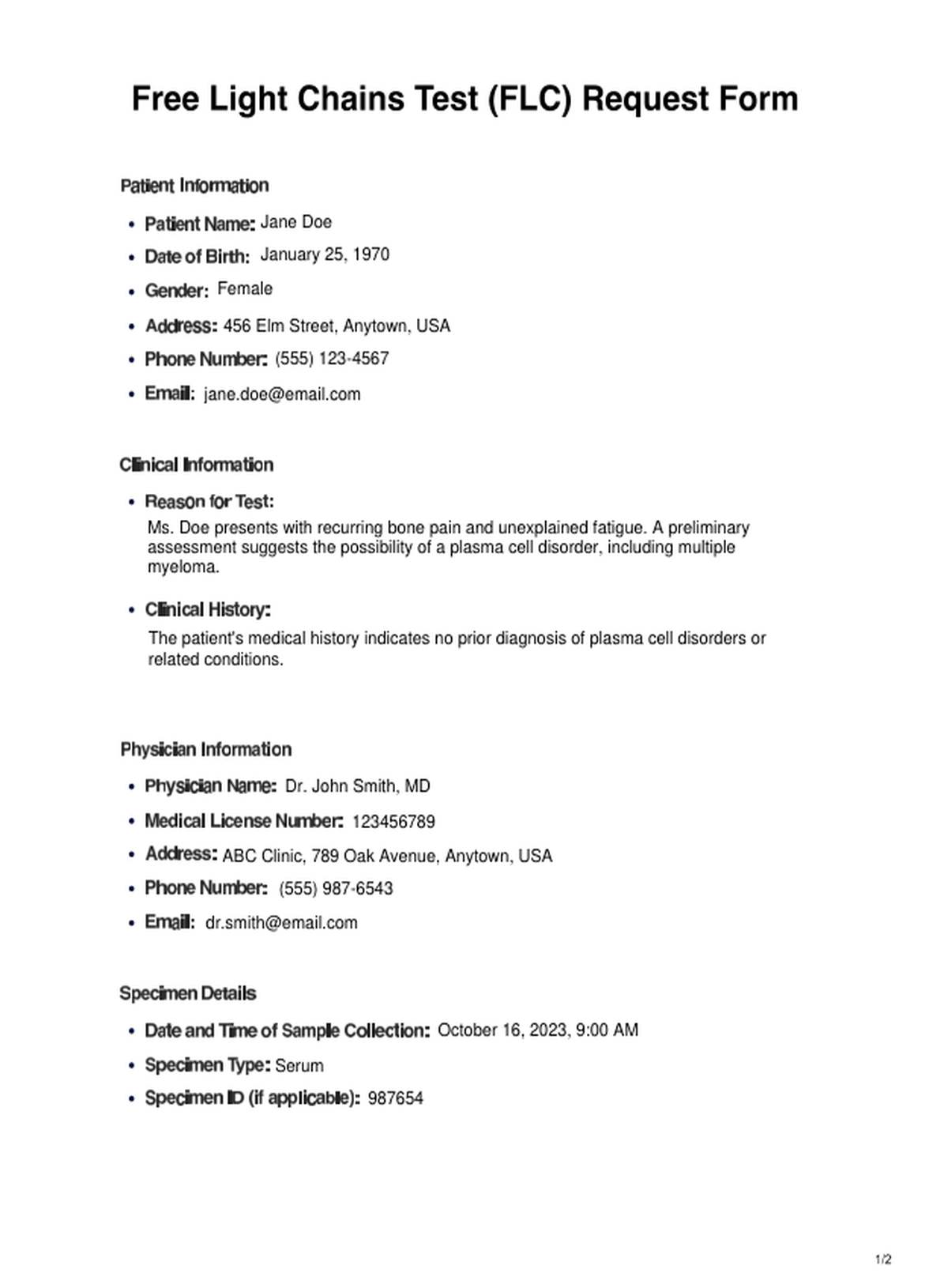


















-template.jpg)


















































































